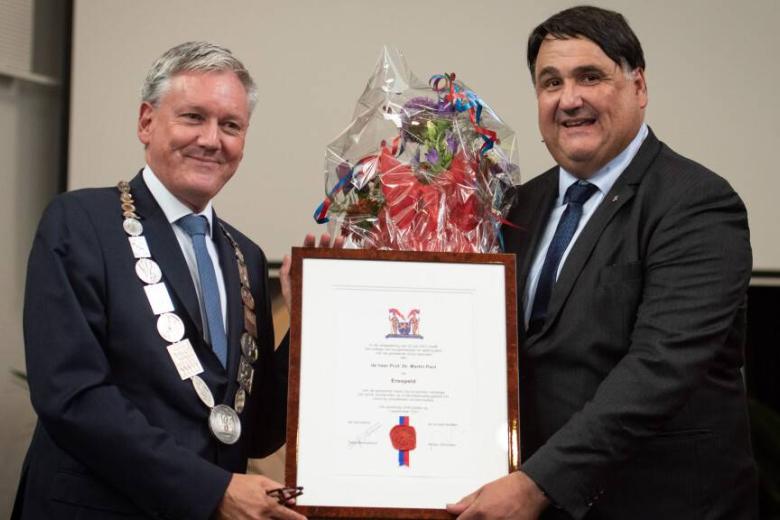New protein brings us closer to treatment for diabetic heart failure
Researchers at Maastricht University (UM) have discovered a protein that could make a significant contribution to a potential treatment for heart failure in people with diabetes. Heart failure is the leading cause of death among this group. This discovery, made by head researchers Joost Luiken, Dietbert Neumann and Professor Jan Glatz, professor of heart metabolism at UM, has been published last Monday in the prestigious scientific journal Diabetes.
Transport of fatty acids
The Western diet causes an increase in fats in the bodies of many people. Relatively too much absorption of fatty acids by the heart increases the risk of heart failure. A fatty heart muscle does not contract very well. The increased fatty acid absorption comes at the expense of absorbing glucose, the heart’s other important fuel. As a result, the heart ends up in a diabetic state. That works as follows. The surface of heart muscle cells contains two proteins, one of which (CD36) is involved in the transport of fatty acids and the other (GLUT4) in the transport of glucose. In a healthy person, there is a good exchange between these two proteins on the cell surface. In people with diabetes who have a fatty muscle, this exchange is disturbed.
Regulating proteins
In a healthy heart, CD36 is not only found on the cell surface, but mainly in repositories within the heart muscle cell. In the heart of a person with diabetes, however, the protein CD36 is mostly present on the cell surface and thus causes excessive fatty acid uptake. Luiken, Neumann and Glatz’s team has now found a protein that is capable of sending CD36 ‘back in the box’ and bringing the fatty acid absorption back to normal proportions. This involves a protein that regulates the acidity of these repositories. In short: the more acidic the repositories, the more of the CD36 protein can be stored. Thus, the absorption of fatty acids in the heart is better regulated.
Treatment
Head researcher Joost Luiken has been researching the transport of fatty acids in the heart for 20 years. An earlier major discovery within his research group involved the observation that the CD36 protein moves back and forth between intracellular repositories and the cell surface, thus helping to regulate the fatty acids. The new finding that this process depends, in turn, on the acidity of these repositories is an important step, which has now been verified in human heart muscle cells. This discovery offers possibilities for the development of a medicine to combat diabetic heart failure, a common complication in diabetes that is based on a disturbed fatty acid-glucose balance. By activating the protein that regulates acidity in people with diabetes, less CD36 will go to the cell surface. As a result, fewer fatty acids will be absorbed, the uptake of glucose via GLT4 can be restored and heart function will improve.
‘The development of such a medicine is important because current anti-diabetes drugs only offer limited protection against the complication of heart failure. This research is a good example of basic research that still has great value for the discovery of new starting points for treatment of diseases of affluence’, Luiken explains.
Also read
-

-
International gravitational wave laboratory opens in Maastricht
Demissionary Minister of Education, Culture and Science Ingrid van Engelshoven will open ETpathfinder in Maastricht this afternoon. The state-of-the-art physics laboratory will serve as a testing ground for the development of technologies for future gravitational wave detectors.
-
Martin Paul receives city of Venlo's badge of honour
UM President Martin Paul received the badge of honour ('erespeld) of the city of Venlo on 7 September from Mayor Scholten.